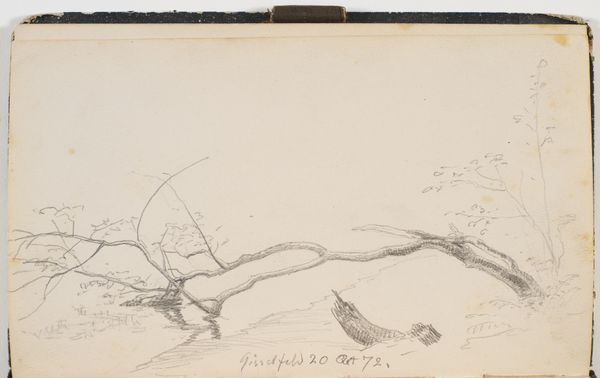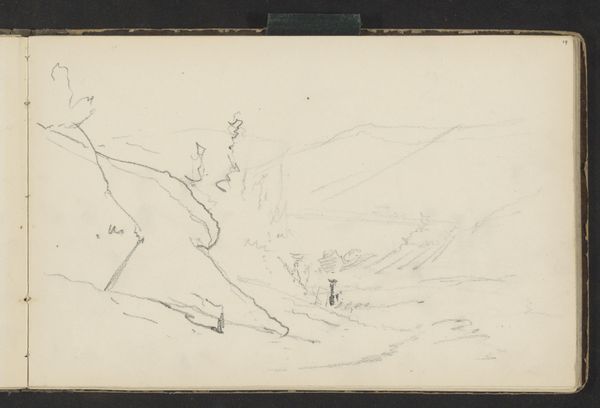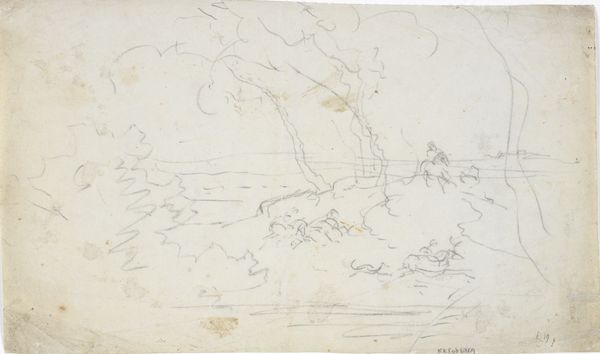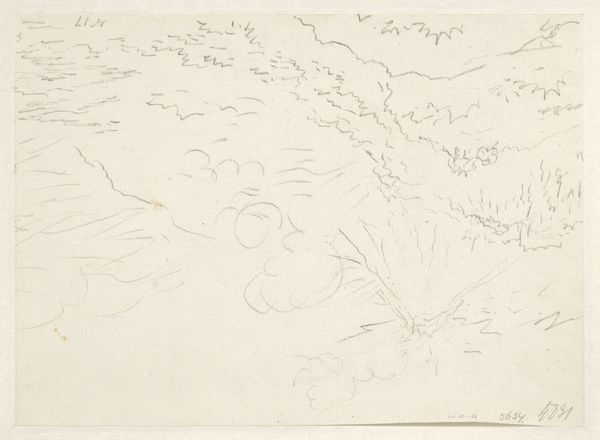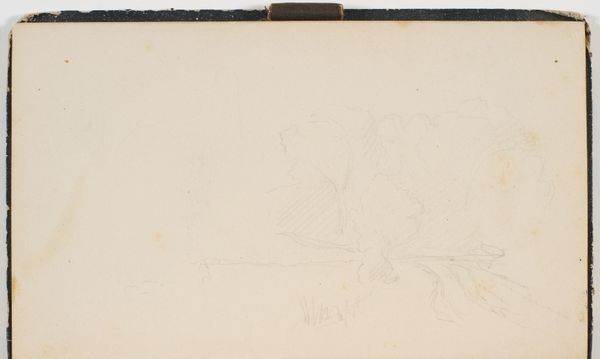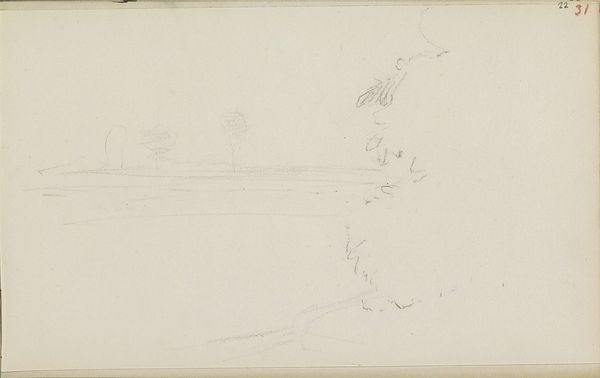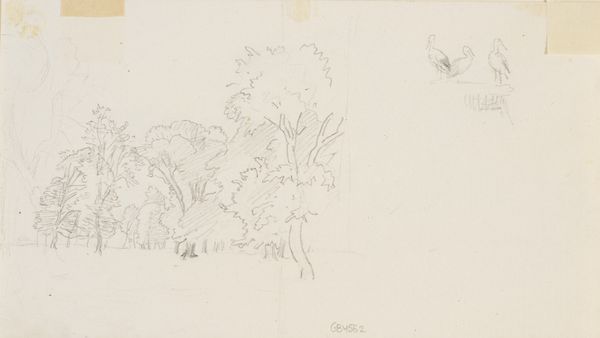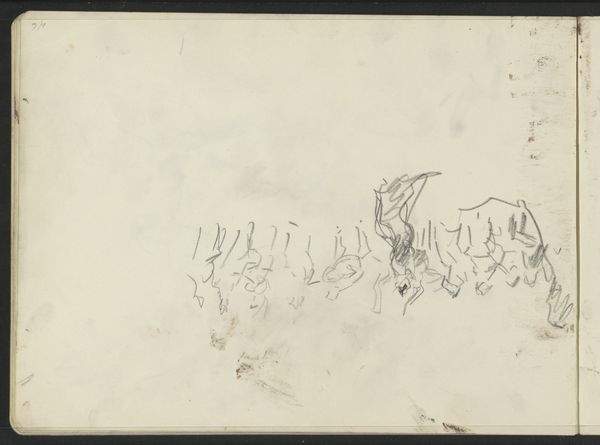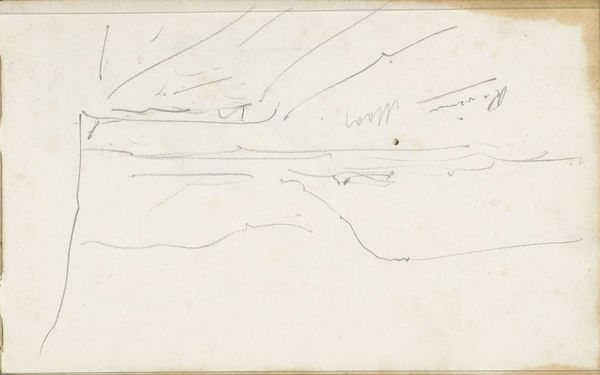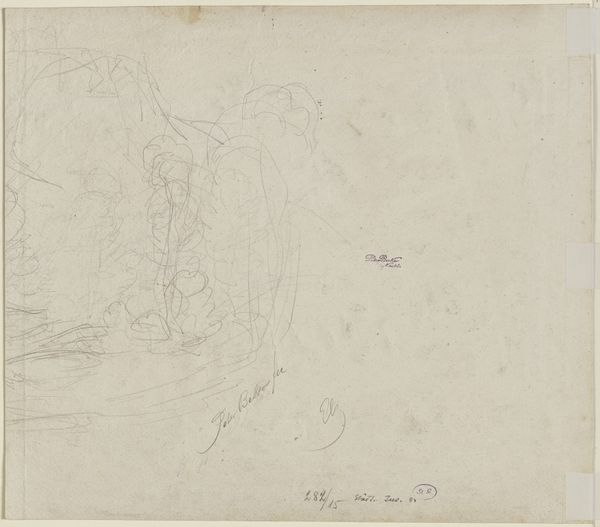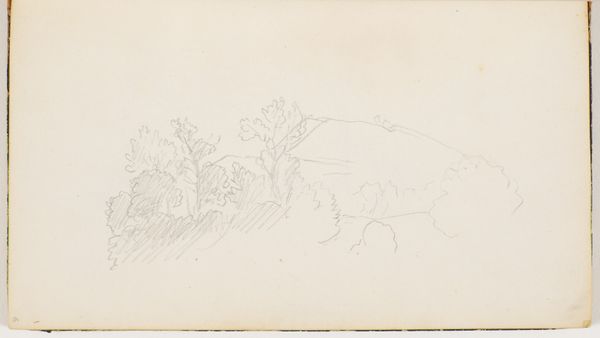
drawing, paper, pencil
#
drawing
#
landscape
#
paper
#
pencil
#
line
Dimensions: 215 mm (height) x 130 mm (width) (bladmaal)
Curator: This drawing, made with pencil on paper, is entitled "Spinkle grene og løv," which translates to "Sprig Branches and Leaves," created by P.C. Skovgaard in 1872. It currently resides in the collection of the Statens Museum for Kunst. Editor: The immediate feeling is one of quiet observation. It feels intimate, like a stolen glance into nature’s notebook. I’m curious about the purpose it served to the artist. Was it preparation? A simple exercise? The sparcity contributes to an air of spontaneity. Curator: Considering the context of Skovgaard's larger body of work, dominated by landscape paintings, one could definitely interpret this work as a preparatory study, particularly as there is what looks like handwriting just beneath the rendering. It highlights his focus on rendering detail through drawing before the work of painting. Editor: It is interesting how even these minimalist lines carry the weight of the wider romantic movement. What meanings were the branches, leaves, the nature symbols of the day freighted with? Curator: Trees and foliage in art from this era often represent ideas of growth, renewal, and a connection to the divine or natural world, embodying the sublime power and beauty that was so embraced by artists and the population at the time. Consider that these sketches allowed Skovgaard to return to a scene multiple times, drawing multiple versions in varying degrees of realism before beginning any final renderings. Editor: It makes me wonder about the physical labor and environment that resulted in the drawing before us. How much time might Skovgaard spend outside to produce just one page such as this? What effect does the means of production have on the resulting drawing and therefore what significance should that labor or context give us? Curator: Those are good questions. It reminds us that even the most seemingly simple sketch is the product of artistic intention, labor, and a specific historical context—a set of elements all working in collaboration to create this understated but still resonant work. Editor: Absolutely. It speaks to both the tangible process and the underlying symbolism present even in the most seemingly simple representations.
Comments
No comments
Be the first to comment and join the conversation on the ultimate creative platform.
